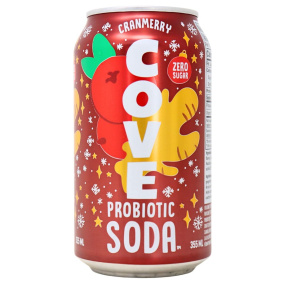
Keto vs. Paleo: Which Is Right for You?
Summary
The keto diet focuses on high-fat and minimal carbs to achieve ketosis, while paleo emphasizes the whole, unprocessed foods our ancestors ate. Both diets eliminate processed foods but differ in their approach to macronutrients, with keto requiring strict tracking and paleo focusing on food quality. Your health goals, lifestyle, and individual needs should determine which approach is best for your unique situation.
Navigating the world of specialized diets can feel overwhelming, especially when trying to decide between popular approaches like keto and paleo. Both diets have passionate followers claiming transformative health benefits, but understanding their fundamental differences is crucial to choosing the right path for your unique body and goals.
The confusion around which diet is best often leads to frustration, plan-hopping, and ultimately giving up on dietary improvements altogether.
While both keto and paleo diets offer powerful health benefits and can be essential for managing specific conditions, finding a sustainable approach is what truly matters. You can maintain the healthiest diet long-term, which might mean adopting the principles that resonate most with you from each approach rather than following either with strict perfection.
Throughout this article, we'll break down the key differences between these popular diets, helping you determine which elements align best with your lifestyle and health objectives.
Differences Between Keto and Paleo Diet
The keto diet focuses on achieving ketosis through high fat and minimal carbs, making it ideal for those seeking rapid weight loss, largely from water loss and fat adaptation in the early stages. The paleo diet emphasizes whole, unprocessed foods our ancestors ate, better suited for those wanting sustainable lifestyle changes with fewer restrictions. Both eliminate processed foods but differ significantly in their approach to macronutrients and food selection.
What is the Keto Diet?
The ketogenic diet is a high-fat, low-carbohydrate eating plan designed to put your body into a metabolic state called ketosis. Unlike the paleo diet, keto strictly limits carbohydrate intake to typically 20-50 grams per day, forcing your body to burn fat for fuel instead of glucose. This metabolic shift can produce dramatic short-term weight loss results that many find motivating.
Keto, just like paleo, eliminates highly processed foods and emphasizes whole food consumption. However, keto places far more importance on macronutrient ratios rather than food quality alone. The standard ketogenic diet typically requires 70-80% of calories from fat, 15-20% from protein, and just 5-10% from carbohydrates.
What truly distinguishes keto is its biochemical approach to weight management. By maintaining ketosis, the body produces ketones in the liver that serve as an alternative energy source when glucose is limited.
- Macronutrient focus: 70-80% fat, 15-20% protein, 5-10% carbs
- Primary goal: Achieving and maintaining ketosis
- Key foods: Fatty meats, eggs, butter, oils, avocados, and low-carb vegetables
- Restricted foods: Grains, most fruits, starchy vegetables, and sugars
- Tracking required: Careful monitoring of carbohydrate intake
Transitioning to keto often involves an adjustment period known as "keto flu" as your body adapts to using fat for fuel. This temporary phase may include fatigue, headaches, and irritability that typically resolves within a week or two as your metabolism shifts.
Our Best Keto Products Selection
- Keto-Friendly Snacks: Indulge in low-carb snacks such as edamame beans, which are perfect for satisfying cravings without compromising your diet.
- Keto Baking Essentials: Create delicious low-carb baked goods using almond flour and coconut flour.
- Keto Sauces and Condiments: Enhance your meals with sugar-free ketchup and mayonnaise, adding flavour without unnecessary carbs.
- Keto Pasta Alternatives: Enjoy pasta dishes guilt-free with shirataki noodles and zucchini noodles, both excellent low-carb substitutes.
- Keto-Friendly Beverages: Quench your thirst with unsweetened almond milk and bulletproof coffee, beverages that align with your ketogenic lifestyle.
What is the Paleo Diet?
The paleo diet is built around consuming foods that our hunter-gatherer ancestors would have eaten during the Paleolithic era, approximately 2.5 million to 10,000 years ago.
Unlike keto, paleo doesn't restrict carbohydrate intake or require specific macronutrient ratios, focusing instead on food quality and evolutionary appropriateness. This approach eliminates all processed foods that weren't available to our ancestors.
Paleo shares keto's emphasis on whole foods and eliminating processed items. Both diets include high-quality proteins and healthy fats. However, paleo allows foods that would quickly kick someone out of ketosis, such as sweet potatoes, fruits, and honey, in moderation.
What makes paleo distinctive is its philosophical foundation: if a caveman wouldn't recognize it, don't eat it. This means avoiding not just processed foods but also agricultural products like grains, legumes, and dairy that humans only began consuming after the advent of farming.
- Historical focus: Foods available to pre-agricultural humans
- Primary goal: Reducing inflammation and improving health through ancestral eating
- Key foods: Grass-fed meats, fish, eggs, vegetables, fruits, nuts, and seeds
- Restricted foods: Grains, legumes, dairy, refined sugar, and processed oils
- Tracking required: None; focuses on food quality rather than quantities
The paleo approach can be more sustainable in the long term, though sustainability depends on individual preferences, lifestyle, and how easily one can access paleo-friendly foods.
Our Best Paleo Products Selection
- Paleo Snacks: Satisfy your hunger between meals with nut mixes and dried fruit.
- Paleo Baking Mixes: Bake your favourite treats using cassava flour and tigernut flour.
- Paleo Protein Bars: Fuel your day with protein bars.
- Paleo Pantry Staples: Stock your kitchen with essentials like coconut aminos and avocado oil, supporting your paleo cooking needs.
Keto vs. Paleo: Key Differences
|
Feature |
Keto Diet |
Paleo Diet |
|
Focus |
Metabolic state (ketosis) |
Evolutionary appropriateness |
|
Carbohydrate Intake |
Very low (20-50g daily) |
Moderate (no specific limit) |
|
Foods Allowed |
High-fat meats, eggs, oils, butter, avocados, low-carb vegetables, and limited dairy |
Meats, fish, eggs, vegetables, fruits, nuts, seeds, healthy oils |
|
Foods Restricted |
Grains, most fruits, starchy vegetables, legumes, and sugar |
Grains, legumes, dairy, refined sugar, processed foods |
|
Potential Benefits |
Weight loss, improved insulin sensitivity, reduced hunger, and mental clarity |
Reduced inflammation, improved digestion, stable energy, and better nutrient intake |
|
Who it's better for |
Those seeking quick weight loss, managing epilepsy, insulin resistance, or metabolic disorders |
Those with inflammatory conditions, seeking sustainable lifestyle change, or athletes needing more carbs |
Which One is Right for You and How to Choose
Choosing between keto and paleo depends primarily on your specific health goals, lifestyle sustainability, and metabolic needs. The best diet for you aligns with your long-term health objectives while fitting realistically into your daily routine. Consider your medical history, activity level, and relationship with food tracking before committing to either approach. Consulting with a healthcare provider can help determine which option better supports your unique needs.
What to Consider When Choosing
Before deciding between keto and paleo, evaluate these key factors that can significantly impact your success and satisfaction with either dietary approach:
- Health Goals: Keto typically delivers faster weight loss results and may better regulate blood sugar, while paleo often reduces inflammation and improves overall wellness. Consider which outcomes matter most to you.
- Lifestyle Compatibility: Keto requires careful tracking and measuring of foods, making it more demanding day-to-day. Paleo focuses on food quality rather than quantity, which many find easier to maintain in the long term.
- Exercise Routine: High-intensity or endurance athletes often struggle with the limited carbohydrates on keto. The moderate carb allowance in paleo can better support intense training sessions while still promoting health benefits.
- Food Preferences: If you enjoy fruits, starchy vegetables, and natural sweeteners, paleo offers more flexibility. If you love fatty foods and can limit carbs without feeling deprived, keto might feel less restrictive.
- Previous Diet Experience: Your history with other diets matters. Those who've struggled with strict calorie counting often find paleo's quality-focused approach refreshing, while those who thrive with clear rules may prefer keto's structured guidelines.
The ideal diet should feel sustainable rather than punishing. Many people find success by starting with one approach and modifying it over time to suit their individual needs and preferences better.
Goals and People Who Could Benefit Most
Different health objectives often determine which dietary approach will serve you best. The keto diet typically delivers superior results for rapid weight loss, managing type 2 diabetes, and treating certain neurological conditions like epilepsy.
People seeking to control insulin resistance or improve metabolic syndrome symptoms may find keto's strict carbohydrate limits particularly beneficial.
The paleo diet often works better for those with autoimmune conditions, digestive issues, or chronic inflammation. Its emphasis on nutrient-dense whole foods without strict macronutrient counting makes it more sustainable for active individuals who need adequate energy for regular workouts.
Athletes who require more carbohydrates for performance typically maintain better energy levels on paleo than on keto.
Lifestyle factors significantly influence dietary success. Busy professionals who can't dedicate time to careful food tracking might find paleo's simpler "eat real food" approach more practical.
Conversely, data-driven personalities often appreciate keto's measurable outcomes and clear guidelines. Social situations and family dynamics matter too. Paleo can be easier to adapt to family meals since children and active adults generally need more carbohydrates than keto allows.
Consider your personal history as well. Those with a history of restrictive eating patterns might find paleo's flexibility more psychologically healthy, while people who thrive with clear boundaries often experience greater success with keto's defined limits.
How Natura Market Supports Your Dietary Journey
At Natura Market, we understand the challenges of maintaining specialized diets like keto and paleo in a world of processed convenience foods. That's why we've carefully curated Canada's largest selection of high-quality products that align perfectly with both dietary approaches, eliminating the frustration of reading endless ingredient labels or driving to multiple stores. Our online platform makes accessing premium keto and paleo products convenient, regardless of where you live in Canada.
We take pride in offering innovative brands catering to specialized dietary needs, with options from industry leaders like Primal Kitchen, Siete Foods, and Kettle & Fire. Whether you're searching for clean keto-friendly fats, nutrient-dense paleo proteins, or versatile ingredients that work for both diets, our extensive catalogue has been thoughtfully selected to support your health journey.






